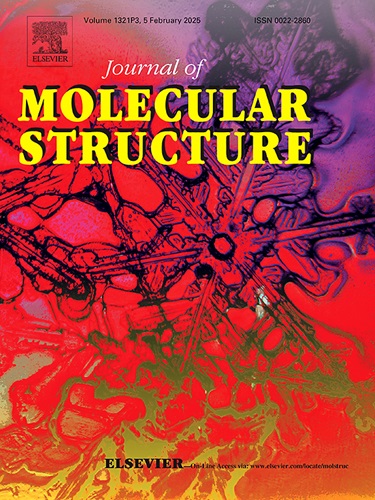lonidamine-tacrine/quinazoline复合物己糖激酶2抑制研究:设计、合成、分子对接和动力学模拟
IF 4
2区 化学
Q2 CHEMISTRY, PHYSICAL
引用次数: 0
摘要
糖酵解抑制被认为是治疗癌症的一种治疗方法。己糖激酶2 (HK2)是一种限速酶,催化葡萄糖磷酸化的关键过程,用于糖酵解和其他信号通路。HK2阳性表达通常支持癌细胞存活,而系统性缺失或抑制HK2已被证明会阻碍肿瘤生长。在此,我们采用基于结构的方法,设计并合成了已知的HK2抑制剂Lonidamine (LND)的偶联物,并评估了它们的HK2酶抑制活性。特别是,通过不同长度的酰胺键连接的lnd -他克林和lnd -喹唑啉偶联物已被探索为体外有效的HK2抑制剂。在研究中发现,在亚微摩尔浓度下抑制HK2的hit分子比亲本LND分子效果更好。与非恶性HEK细胞相比,这些分子对癌变的HepG2细胞表现出选择性的细胞毒性。此外,这些偶联物中的一些作为PROTACs/降解物,在HepG2细胞中显示出剂量依赖性,系统性地降解HK2。因此,首次探索了他克林和喹唑啉基序作为降解剂。这些发现得到了对接和模拟研究的支持。本文章由计算机程序翻译,如有差异,请以英文原文为准。
Hexokinase 2 inhibition study of lonidamine-tacrine/quinazoline hybrids: Design, synthesis, molecular docking, and dynamics simulations
Glycolysis inhibition is known as a therapeutic method for cancer therapy. Hexokinase 2 (HK2) is the rate-limiting enzyme, catalyzing the critical process of glucose phosphorylation for later use in glycolysis and other signaling pathways. Positive HK2 expression often supports cancer cell survival while systemic deletion or inhibition of HK2 has shown to hinder tumor growth. Herein, we have employed a structure-based approach, designed and synthesized conjugates of Lonidamine (LND), a known HK2 inhibitor, and evaluated their HK2 enzyme inhibitory activity. In particular, the LND-tacrine and LND-quinazoline conjugates connected through amide linkages of different linker lengths have been explored as potent HK2 inhibitors in vitro. The hit molecules have been identified in the study that inhibit HK2 at sub-micromolar concentrations working better than the parent LND molecule. These molecules have shown selective cytotoxicity against cancerous HepG2 cells than the non-malignant HEK cells. Additionally, some of these conjugates have acted as PROTACs/degraders that have shown dose dependent, systematic degradation of HK2 in HepG2 cells. Hence, for the first time tacrine and quinazoline motifs have been explored as degraders. These findings have been backed by docking and simulation study.
求助全文
通过发布文献求助,成功后即可免费获取论文全文。
去求助
来源期刊

Journal of Molecular Structure
化学-物理化学
CiteScore
7.10
自引率
15.80%
发文量
2384
审稿时长
45 days
期刊介绍:
The Journal of Molecular Structure is dedicated to the publication of full-length articles and review papers, providing important new structural information on all types of chemical species including:
• Stable and unstable molecules in all types of environments (vapour, molecular beam, liquid, solution, liquid crystal, solid state, matrix-isolated, surface-absorbed etc.)
• Chemical intermediates
• Molecules in excited states
• Biological molecules
• Polymers.
The methods used may include any combination of spectroscopic and non-spectroscopic techniques, for example:
• Infrared spectroscopy (mid, far, near)
• Raman spectroscopy and non-linear Raman methods (CARS, etc.)
• Electronic absorption spectroscopy
• Optical rotatory dispersion and circular dichroism
• Fluorescence and phosphorescence techniques
• Electron spectroscopies (PES, XPS), EXAFS, etc.
• Microwave spectroscopy
• Electron diffraction
• NMR and ESR spectroscopies
• Mössbauer spectroscopy
• X-ray crystallography
• Charge Density Analyses
• Computational Studies (supplementing experimental methods)
We encourage publications combining theoretical and experimental approaches. The structural insights gained by the studies should be correlated with the properties, activity and/ or reactivity of the molecule under investigation and the relevance of this molecule and its implications should be discussed.
 求助内容:
求助内容: 应助结果提醒方式:
应助结果提醒方式:


